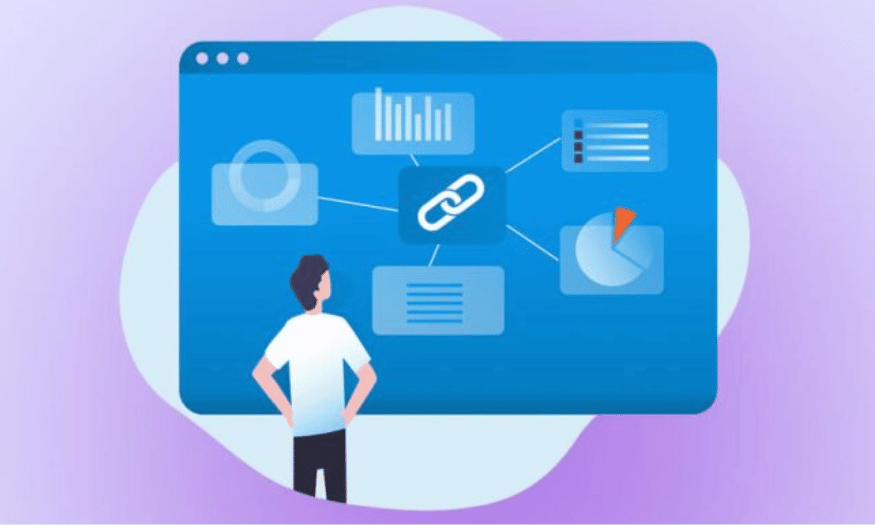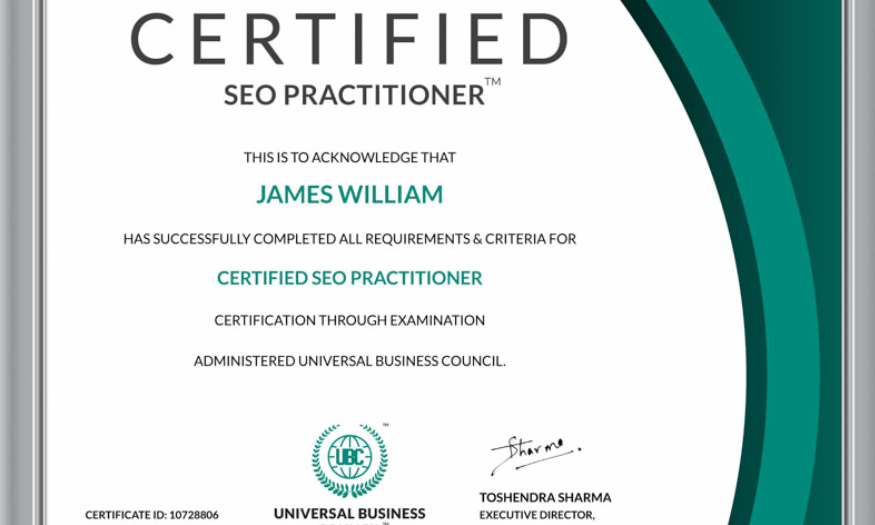Best Selling Products
How to Use Different Types of Links on a Website Effectively
Nội dung
- 1. What is a link?
- 2. Types of Links in SEO
- 2.1 Internal Link
- 2.2 External Link
- 2.3 Backlink
- 3. What is Anchor Text and how to use it in Links?
- 4. Benefits of using Links in Websites
- 4.1 Improve user experience
- 4.2 Building reputation
- 4.3 Enhanced Interoperability
- 5. Frequently Asked Questions
- 5.1 What is the difference between Internal Link and External Link?
- 5.2 How do backlinks affect SEO?
- 5.3 What tools are available to find broken links on my website?
- 6. Website Link Optimization Tool: Ahrefs Standard
- 7. Conclusion
Optimizing the use of links on a website not only helps improve user experience but also improves search rankings. Links such as internal links, external links, and nofollow links play an important role in guiding readers and creating connections between pages. In this article, Sadesign will discuss effective ways to use links, from how to build a reasonable internal link structure to using external links strategically to increase the trust and reputation of your website.

Optimizing the use of links on a website not only helps improve user experience but also improves search rankings. Links such as internal links, external links, and nofollow links play an important role in guiding readers and creating connections between pages. In this article, Sadesign will discuss effective ways to use links, from how to build a reasonable internal link structure to using external links strategically to increase the trust and reputation of your website.
1. What is a link?
Links, also known as hyperlinks, are an important element in the online world, allowing users to move between pages within the same website (internal links) or to other websites (external links) with just one click. In essence, links are a form of reference, like a pointer that helps users easily access the information they need.
When a user clicks on a link, the browser opens a new web page or moves to the specified location, creating a seamless interactive experience. Links can appear as text, images, or other formats that aid navigation. Structurally, links typically consist of two main parts: the path (URL) and the anchor text. For example, when you see the phrase "If you click here," the "here" part is the anchor text that leads to the specific link.
2. Types of Links in SEO
In the field of SEO, links are divided into three main types: internal links, external links, and backlinks. These are core concepts that anyone doing SEO needs to understand. Understanding and applying effective link strategies not only helps improve a website's search position but also enhances the user experience.
2.1 Internal Link
Internal links are links that lead to other pages on the same website. They create a hierarchy of information, helping to improve navigation for users. When you read an article on GTV SEO, you may see links to other related articles, encouraging users to explore more content.
Internal linking not only helps distribute SEO “power” but also facilitates information search. By linking related pages, you help search engines better understand the structure and topic of your website, thereby improving your visibility on search pages.
.png)
2.2 External Link
External links, also known as outbound links, are links from your website to another website. They are important for providing additional information and building credibility for your content. For example, when you read an article on GTV SEO, there may be links to other reputable sources that give you a more comprehensive view of the issue.
External links not only enrich your content, but also show search engines that your content is backed by reliable sources. However, use external links with caution; only link to reputable sites and make sure the link opens in a new tab so as not to disrupt the user experience.
2.3 Backlink
Backlinks, also known as inbound links, are links from other websites that point to your website. They are considered “votes of confidence” for your content. A quality backlink from an authoritative site can improve your ranking on search engines.
Strategies for acquiring quality backlinks include creating valuable content that others want to share, guest posting on authoritative blogs, and building relationships with industry influencers. By acquiring quality backlinks, you not only increase your authority, but also help improve your website’s visibility in search engines.
By understanding the types of links and applying them effectively, you will be able to optimize your website, attract more customers and increase your credibility in the eyes of search engines.
3. What is Anchor Text and how to use it in Links?
Anchor text is the clickable text in a link, usually in blue and underlined. It is essential for users to understand the content of the landing page they are being taken to. For example, instead of just displaying a URL like https://sadesign.vn/seo-la-gi/ , using anchor text like "What is SEO" will provide clearer context, helping readers easily identify the information they are about to explore.
From an SEO perspective, anchor text not only supports users but also plays an important role in optimizing search rankings. Search engines use anchor text to understand the content of the landing page, thereby deciding how to rank for related keywords. However, the use of anchor text must be done naturally and reasonably, avoiding keyword stuffing, which can lead to being considered spam.
Some important principles when using anchor text include: using descriptive text that is clear, relevant to the content of the landing page, and ensuring variety in usage. You should combine different types of anchor text, from brief descriptions to specific keywords, to optimize both the user experience and SEO effectiveness of your website.
.png)
4. Benefits of using Links in Websites
Using links on your website is not just a technical element, but an essential part of your overall optimization strategy.
4.1 Improve user experience
Links improve the user experience by creating a clear and intuitive navigation system. When users can easily find relevant information through links, they feel more satisfied and tend to stay on the page longer. For example, a blog post can include links to other posts with similar content, encouraging readers to explore further and increase engagement with the site.
Links not only help users, but also support SEO optimization. Search engines use links to understand the structure and organization of a website, making it easier to crawl and index pages. Linking new pages to existing pages will help search engines quickly discover and evaluate new content. Moreover, a reasonable link structure will distribute SEO "power", improve the website's ranking in search results, thereby attracting more organic traffic.
4.2 Building reputation
Using links strategically not only improves user experience and SEO, but also contributes significantly to building the credibility of your website. When you link to reputable and relevant sources, you are demonstrating that your content is backed by reliable material. This not only enhances the credibility of your content, but also proves that you are providing real value to your readers.
Additionally, getting backlinks from reputable sites in your industry also significantly increases the credibility of your website. Users tend to trust websites that link to and from high-quality sources more. Therefore, building a solid link network not only improves SEO but also enhances your brand reputation in the eyes of both users and search engines.
4.3 Enhanced Interoperability
Another important benefit of using links is the ability to increase user engagement with the content on your website. When you provide links to related articles, videos, or documents, users feel encouraged to explore further, creating a richer experience. This not only increases the time spent on the page, but also reduces bounce rate, an important indicator of the effectiveness of a website.
Furthermore, integrating links into your content also creates an opportunity to attract users to return to your website in the future. When they see that you provide useful and easily accessible information, they will be more likely to return to learn more. This not only increases traffic but also builds a loyal user community, thereby creating a solid foundation for sustainable brand growth.
.png)
5. Frequently Asked Questions
5.1 What is the difference between Internal Link and External Link?
Internal Links and External Links are two important types of links in the structure of a website, but they serve different purposes. Internal Links, or internal links, are links that lead to other pages on the same website. The main goal of Internal Links is to improve the structure of the website, making it easier for users to navigate between pages and enhancing the user experience. In addition, Internal Links also play an important role in distributing SEO “power”, that is, helping search engines better understand the structure and topic of the website, thereby improving visibility in search results.
External Links, on the other hand, are links that lead to other websites. Not only do they provide additional information to users, but they also help build the credibility of your content. When you link to reputable sources, you are showing that your content is backed by reliable documents, which creates value for your readers. External Links extend the user experience by connecting them to more rich sources of information, and can also improve the credibility and ranking of your website in the eyes of search engines.
5.2 How do backlinks affect SEO?
Backlinks play an important role in SEO, acting as “votes” for the quality and trustworthiness of your website. When another website links to yours, it not only brings direct traffic, but it also sends a signal to search engines like Google that your content is valuable and trustworthy. The quantity and quality of backlinks are two key factors that search engines consider when determining a website’s ranking. A large number of low-quality backlinks may not be as effective as a small number of backlinks from reputable and relevant websites.
Additionally, backlinks from authoritative websites not only help improve search rankings, but also build trust with users. They tend to feel more secure when they see that your content is cited and linked to by credible sources. That’s why building a quality backlink strategy is so important when optimizing your SEO. Focusing on creating valuable content that others want to share and link to will help you get the high-quality backlinks you need.
5.3 What tools are available to find broken links on my website?
Broken link management is important for maintaining a good user experience and improving your site’s SEO. There are many useful tools to help you detect and fix broken links. First, Google Search Console is one of the most powerful tools, providing a report on crawl errors, including broken links. This tool helps you quickly identify problems that need to be fixed in your site’s link structure.
In addition to Google Search Console, Screaming Frog SEO Spider is a powerful desktop tool that can scan your entire website for broken links. It allows you to export the data to a CSV file, making it easier to analyze and fix. Ahrefs is also a good choice, not only for checking broken links but also providing many other SEO features. Online tools such as Broken Link Checker and W3C Link Checker are also good options for checking the validity of links on your website. Using these tools will help you maintain the health of your website's links effectively and q.png) uickly.
uickly.
6. Website Link Optimization Tool: Ahrefs Standard
Ahrefs Standard is one of the most powerful and popular SEO tools available today, especially useful for link optimization. With Ahrefs, you can easily analyze the link structure of a website, identify which backlinks and content are attracting the most traffic. This tool provides detailed information about the quality and quantity of backlinks, helping you better understand the reputation of the website.
Ahrefs also lets you check for broken links, helping you maintain the health of your website and improve user experience. In addition, the "Site Audit" feature scans your entire website for other SEO issues, helping you optimize overall performance. With an intuitive interface and rich data, Ahrefs Standard is an ideal choice to enhance your website's link optimization strategy.
.png)
7. Conclusion
In short, using links effectively is a key factor in optimizing your website. Internal links help improve navigation and user retention, while external links not only create trust but also expand the information network for readers. By applying appropriate strategies, you can develop your website sustainably and achieve your business goals. Always monitor and adjust your link usage to ensure that your website is always operating at its optimal level.












































